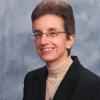The efforts of Pope Francis to reach out to the poor, awaken a connectedness to the Earth and welcome the marginalized into community are inspiring and noteworthy, but they do little to change the present church into a living church consonant with the new cosmos of which we now know ourselves to be members.
Yes, the church has a vital role in helping the world move forward toward unity through the Gospel values of peace and justice, but such movement will not happen unless there is a conscious awakening to the expanding universe and the evolution of biological life, an awakening to the cosmos as our home. Can the church revitalize the Gospel life as one that embraces change, complexity, chaos, future and new creation? Can we envision the emergence of new forms of Gospel life? I do not think this is possible unless we reconnect ourselves – not simply to the world in which we are living – but to the world we are discovering through science and technology.
Yet, we have a difficult time opening up to science as illuminating the path to God. We find ourselves entrenched in old ways of thinking about sin, grace, death, salvation, heaven and hell to the extent that efforts to reframe these beliefs in ways consonant with our time are highly suspect not only by some of the church’s hierarchy but also by some conservative priests and laity who want to preserve a pre-Vatican II church. One young lay theologian said to me not too long ago, “We will get back to real theology when those like you espousing a 'boomer theology' move on.” By “boomer theology” he meant doing theology in light of science and culture rather than doing “real theology” which, as the Academy of Catholic Theology’s mission statement states, is “to foster theological work of the highest intellectual standard that is faithful in the Spirit to the Revelation of God in Christ, as that Revelation has been handed on in Scripture and Tradition, and authoritatively interpreted by the Magisterium.” I seek to do theology in a way that connects with the world we live in, whereas my young friend wants to do theology as an intellectual apologetics of truth. The One Body of the Church is deeply divided.
In his magnum opus The Master and His Emissary: The Divided Brain and the Making of the Western World, British psychiatrist Iain McGilchrist makes a convincing argument that the perils of the modern age and, I would add, the internal conflicts of our divided church, are the result of a divided human brain. By this McGilchrist means that the left hemisphere of the human brain has become functionally disconnected from the right hemisphere. To appreciate this insight, it is helpful to briefly note how the hemispheres of the brain pay different types of attention to the world. Each hemisphere reaches out to the world in a different way or with a different set of priorities and values. How we attend the world governs what it is that we find.
The right hemisphere begins with a relationship to the world at large, not seeing it as a separate object, ripe for manipulation. It is involved with new experience, new events, things, ideas, words, skills or music; it connects with the concrete world of experience. Its attention is in the service of connection, exploration and relation. The defining quality of the right hemisphere’s world is that it thrives on relatedness. It engages each event it encounters as unique. Because of the right hemisphere, we reach out to connect, to create, to share in another’s fate, or to explore the world for what it is.
The left hemisphere is the narrow-beam, precisely focused attention, which enables us to get and grasp; it is the left hemisphere that controls the right hand with which we grasp something and controls the aspects of language by virtue of saying we have "grasped" the meaning or made it certain and pinned it down. The left hemisphere narrows things to a certainty, while the right hemisphere opens them up to possibility. Its attention is narrow, its vision myopic, and it cannot see how the parts fit together. It is good for manipulating the world and controlling the parts. It neglects the incarnate nature of human beings and reduces the living to the mechanical. It prioritizes procedure without having a grasp of meaning or purpose.
The predominance of the left brain is shown in either/or thinking (either science or religion, for example). It is adept at procedures but sees them as ends in themselves. It is not in touch with the world; rather it receives its information from the right brain, which is connected to the world and decodes the information it receives into small pieces. Left on its own (for example, cases of brain injury), the left hemisphere can make up a story when it cannot understand something and tell it with conviction.
McGilchrist claims that a predominance of the left brain emerged, as Greek culture was beginning to pass its peak, for the first time in Western civilization. Until that point, from the 6th century B.C. to the 4th or so there was an almost unparalleled flowering of science and the arts based on the best of what both right and left hemispheres in conjunction could offer. From the right brain came careful observation of the natural world – a sense of the uniqueness of the individual (axial consciousness), with interests that needed to be harmonized with those of the community.
I would suggest, in light of McGilchrist’s work, that a shift toward left-brain dominance in Western Christianity emerged with the rise of scholasticism. Knowledge of God and the things of God began not with experience (the right brain) but with the hypothetical question (the left brain). The rise of heliocentrism furthered the divided brain by disconnecting the human from the cosmos (or microcosm from macrocosm). The image of the world that emerged from physics after Copernicus, Galileo and Newton was a confluence of blind forces where there is no place for contemplation of divinity in nature (right brain). The cutting off of the right brain from the world gave predominance to the left brain and the systematization of knowledge. The ideal, theoretical world of laws and rules began to triumph over that of experience.
By the 19th century, Catholicity was a set of rules and instructions found in a manual. Seminary education became what Karl Rahner called, Denzigertheologie, a compendium of brief doctrinal definitions and statements composed by Fr. Heinrich Denziger. This kind of theology favored modern Catholicism’s inclination to the juridical approach, rather than a theology attached to life, rooted in the real. Denziger theology became linked with an understanding of the church governed solely by laws and instructions: Faith is a process that ends in definitions, and the task of theology to prepare concise and clear definitions. Have we constructed a church that is the image of the world the left brain has made internally, where appeals to the natural world, culture, art, the body and spirituality, have been cut off and ironed out of existence? Is it a church we have created in our minds and extended in concrete all around us?
Catholicity is an inner orientation toward the dynamic of making whole (katholikos), toward what is not yet whole or unified. It emerges from the world as a process – not from the world as a thing – and relies on patient and consistent attention to the unfoldings of the world. Catholicity belongs to the human person who has an inner wholeness, where the right brain and left brain work together. The “catholic” mind seeks to bring together experience (right brain) and information (left brain) to create meaning that can be returned to the world through new horizons of insight that undergird new connections. The sacramental imagination, nurtured in the liturgy through ritual, music and art, is aimed toward the “catholic brain.” We “taste and see” (right brain) in order to know (left brain); we know that we may be deepened by love; and we love so as to unite and transform what we love into the presence of Christ.
We are not created to live with isolated, abstract ideas but with ideas that translate into new realities. To think is to unify, to make wholes where there are scattered fragments; not merely to register it, but to confer upon it a form of unity it would otherwise be without. This calls for a certain attentiveness and intelligence brought to the level of encounter with physical reality. We pursue knowledge not to control but to organize life for a greater unity, a deepening of being which is a deepening of love.
It is important that theology begin with the right brain, with passion, connectivity and experience of the real, to process this information (left brain) in such a way that knowledge contributes to the evolution of self and world. We are created to be part of evolution and to illuminate the mystery of God in evolution. Teilhard de Chardin summed it up when he wrote: “To discover and know is to actually extend the universe ahead and to complete it.”
[Ilia Delio, OSF, a Sister of St. Francis of Washington, D.C., is Haub Director of Catholic Studies and Visiting Professor at Georgetown University. Her recent publications include From Teilhard to Omega: Cocreating an Unfinished Universe and The Unbearable Wholeness of Being: God, Evolution and the Power of Love.]

